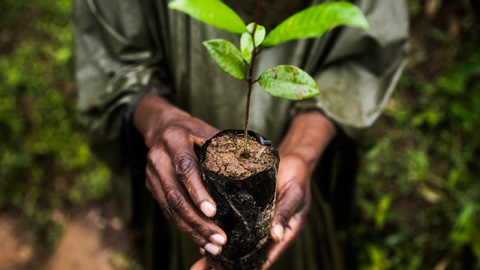Indigenous knowledge, key to a successful ecosystem restoration

26/02/2019
Indigenous peoples and local communities are affected by global environmental change because they directly rely on their immediate environment to meet basic livelihood needs. Therefore, safeguarding and restoring ecosystem resilience is critical to ensuring their food and health sovereignty and overall well-being. Their vested interest in restoring ecosystems from which they directly benefit and their intimate knowledge of their lands, resources and the dynamics affecting them, position them as key elements in the attainment of the ecological restoration projects goals.
However, the contributions of indigenous peoples and local communities continue to be largely absent in international environmental policy fora, in which biological importance and restoration feasibility are prioritised over local concern.
The study, led by ICREA researcher at ICTA-UAB Victoria Reyes-García, reviews hundreds of instances in which, through traditional practices, indigenous peoples have contributed to managing, adapting and restoring the land, sometimes creating new types of highly biodiverse ecosystems. “There are many examples in which indigenous peoples have taken leadership roles in restoring forests, lakes and rivers, grasslands and drylands, mangroves and reefs, and wetlands degraded by outsiders or climate change, successfully coupling the goals of restoration and increasing participation of local population”, explains Victoria Reyes-García.
Traditional practices include anthropogenic burning purposively altering spatial and temporal aspects of habitat heterogeneity to create diversity, waste deposition practices resulting in soil carbon enrichment, rotational swidden cultivation systems able to maintain forest cover and plant diversity, interplanting useful plants in native forests thereby increasing forest diversity, and scattering species-rich hayseed and cleaning meadows to maintain grassland productivity and resilience.
However, the research stresses that not all restoration initiatives engaging indigenous peoples and local communities have been beneficial or successful. “Some campaigns have not successfully involved local communities or impacted afforestation outcomes given the lack of clarity of the policies designed at the central level or the neglect of local interests”, says Reyes-García. She highlights that positive outcomes are normally associated with projects in which local communities have been actively involved in co-designing activities, customary institutions have been recognised, and both short-term direct benefits to local population and long-term support of the maintenance of restored areas have been ensured.
Therefore, Victoria Reyes-García advocates that “in order to meet Aichi Target 15 of the Convention on Biological Diversity on restoring 15% of globally degraded ecosystems there is a need to increase the participation of indigenous peoples and local communities in ecological restoration activities“.
Article:
Reyes‐García V., Fernández‐Llamazares A., McElwee P., Molnár Z., Öllerer Z., Wilson S.J., Brondizio E.S. The contributions of Indigenous Peoples and Local Communities to ecological restoration. Restoration Ecology. (2018)
Available online: https://doi.org/10.1111/rec.12894